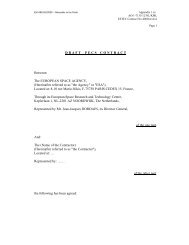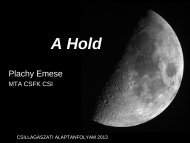Star Forming Regions in Cepheus
Star Forming Regions in Cepheus
Star Forming Regions in Cepheus
Create successful ePaper yourself
Turn your PDF publications into a flip-book with our unique Google optimized e-Paper software.
46<br />
Figure 14. Dust cont<strong>in</strong>uum emission of NGC 7129, observed at 850 µm by Font<br />
et al. (2001). Near-<strong>in</strong>frared sources are marked by star symbols, and H 2 O maser<br />
sources by triangles.<br />
source of RNO 138. Another <strong>in</strong>terest<strong>in</strong>g star is V350 Cep (denoted as IRS 1 by Cohen<br />
& Schwartz 1983), which brightened about 4 mag <strong>in</strong> the 1970’s (Semkov 2004), and<br />
has been stay<strong>in</strong>g at the high level s<strong>in</strong>ce then. Liseau & Sandell (1983) detected CO<br />
outflows associated with both RNO 138 and V350 Cep. Herbig (2008) has shown that<br />
V350 Cep does not belong to the class of the EXor-type eruptive young stars. The<br />
list of low-mass pre-ma<strong>in</strong> sequence stars <strong>in</strong> NGC 7129, based on a literature search, is<br />
given <strong>in</strong> Table 7.<br />
Herbig–Haro objects In the optical, a large number of HH-objects <strong>in</strong> and near NGC<br />
7129 have been reported (Gyulbudaghian, Glushkov & Denisyuk 1978; Hartigan &<br />
Lada 1985; Eiroa, Gómez de Castro & Miranda 1992; Gómez de Castro, Miranda &<br />
Eiroa 1993; Miranda, Eiroa, & Birkle 1994; Gómez de Castro & Robles 1999, see<br />
Table 9). Molecular hydrogen emission <strong>in</strong> the near-<strong>in</strong>frared has been detected from


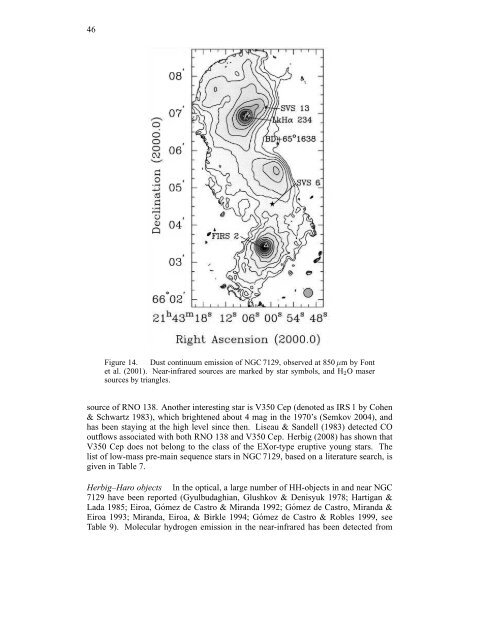


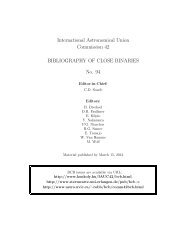

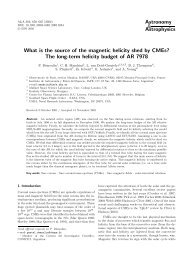


![[001] Kov5acs, G. and VetUo, B. 1979, 'Observations of Two Low ...](https://img.yumpu.com/23925638/1/190x245/001-kov5acs-g-and-vetuo-b-1979-observations-of-two-low-.jpg?quality=85)
